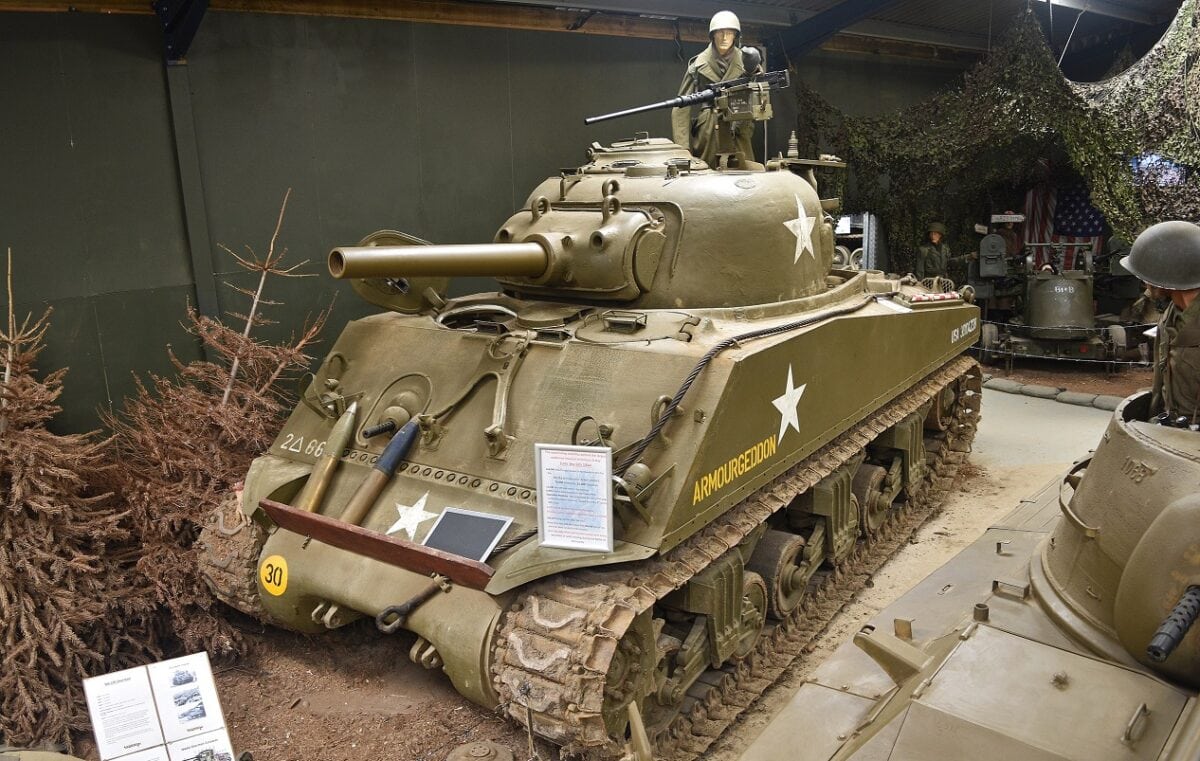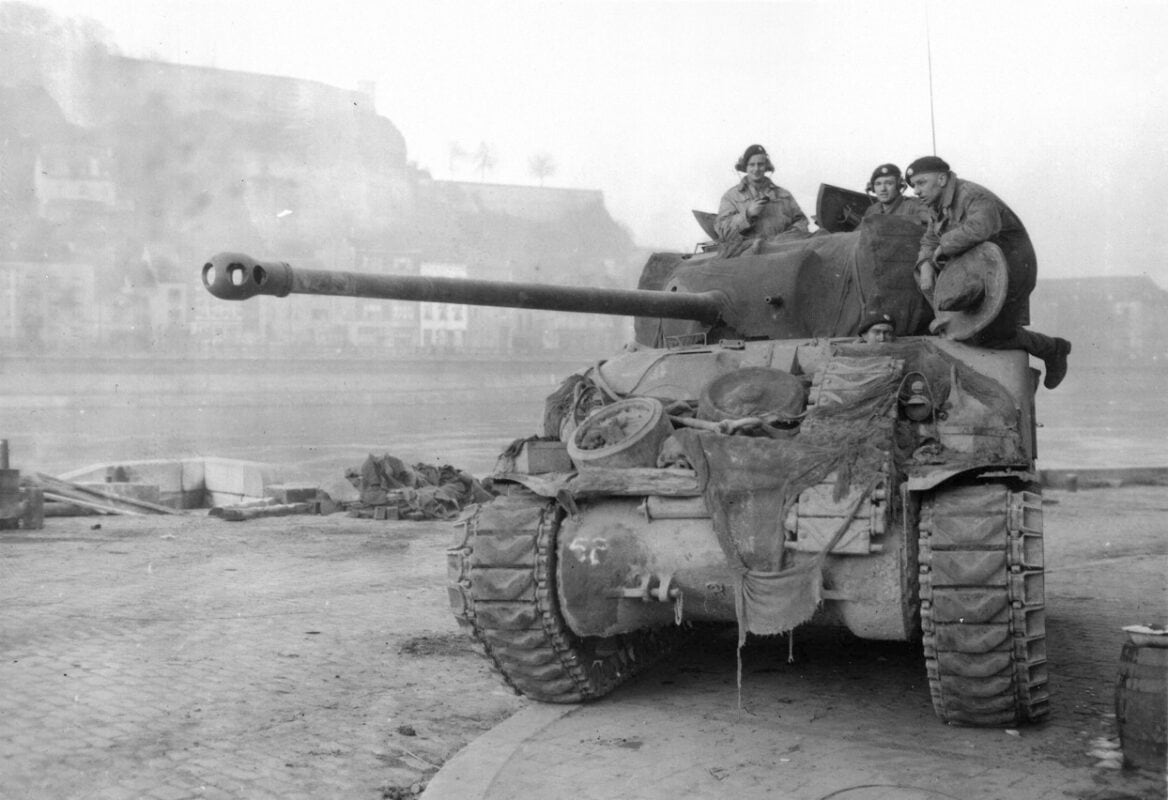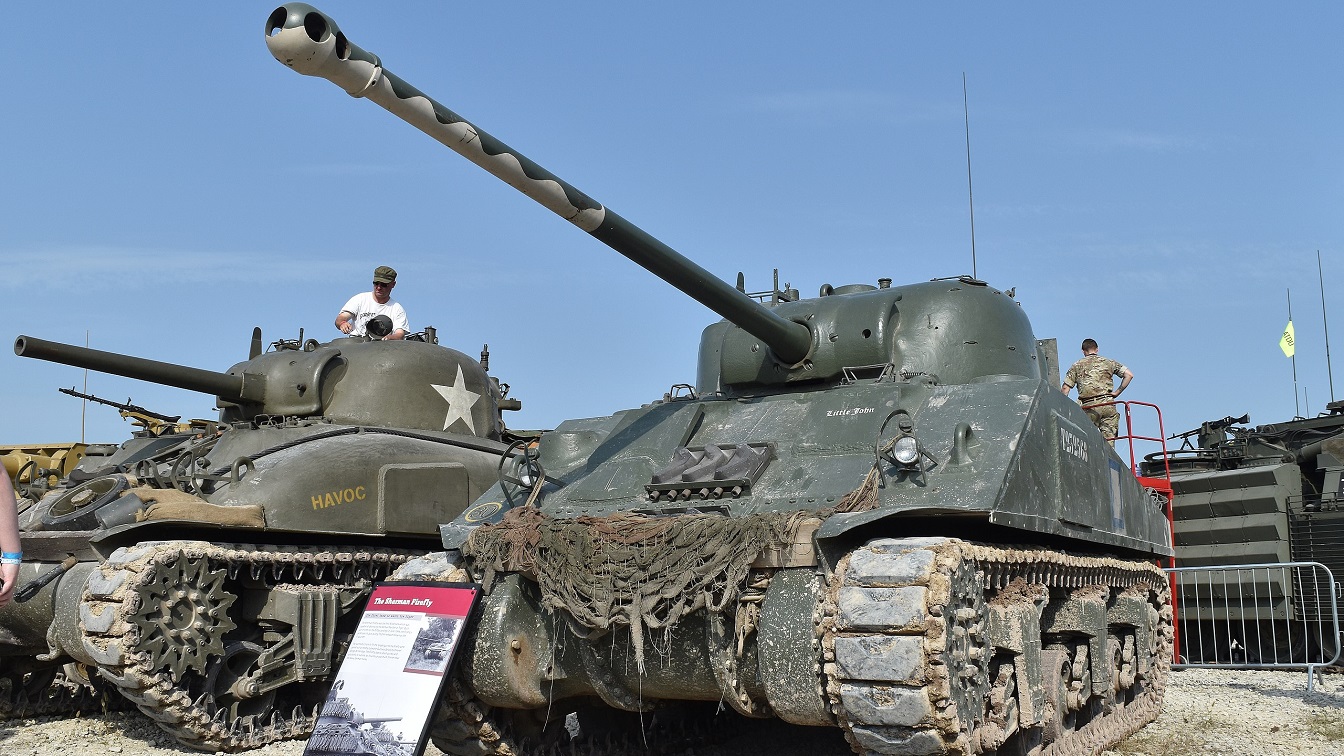The vaunted German Tiger tank was a formidable contender on the battlefield in WWII. It had some foes, and its most formidable fighter was likely the M4 Sherman with its 75mm main gun.
The tank used by American and British soldiers was undeservedly maligned on account of its shortcomings against the German Tiger.
An upgraded variant of the Sherman, the Firefly variant, gave the Sherman a 76mm gun, which gave its crews a much better fighting chance against those Tiger bogeymen.
Spawning the Firefly
The Sherman Firefly was designed in 1943 and was introduced into operational service via the British 21st Army Group in 1944, just in time for the Normandy landings. Although built off of the American-made chassis of the original Sherman, the Firefly’s 76.2mm main gun retrofitted modification — officially designated the Ordnance QF 17-pounder — was not actually used by the U.S. Army, but rather by the British Commonwealth nations’ militaries as well as Poland’s 1st Armoured Division and 2nd Armoured Brigade.
The bastardization required to accommodate the improved armament of the QF-17 created its fair share of challenges. As described by Ken Tout — a former tank gunner and tank commander with the 1st Northamptonshire Yeomanry — in his 1989 book Tanks, Advance!:
“The Firefly tank is an ordinary Sherman but, in order to accommodate the immense breech of the 17-pounder and to store its massive shells, the co-driver has been eliminated and his little den has been used as storage space. … The flash is so brilliant that both gunner and commander need to blink at the moment of firing. Otherwise they will be blinded for so long that they will not see the shot hit the target. The muzzle flash spurts out so much flame that, after a shot or two, the hedge or undergrowth in front of the tank is likely to start burning. When moving, the gun’s overlap in front or, if traversed, to the side is so long that driver, gunner and commander have to be constantly alert to avoid wrapping the barrel around some apparently distant tree, defenceless lamp-post or inoffensive house.”
That muzzle flash, incidentally, is how the Firefly earned its sobriquet in the first place.
Yet another challenge posed by the bigger gun is that the longer barrel made it stick out like the proverbial sore thumb compared with a standard Sherman, which therefore made it a more distinctive target for German adversaries. Accordingly, the Firefly’s crews attempted to disguise this longer gun as much as possible; this was accomplished by jerry-rigging a false muzzle brake halfway up the barrel and painting the forward portion in a counter-shaded pattern to give the illusion of a shorter gun barrel.
Fighting Fireflies Hunt the Tigers and Panthers
As noted by retired Canadian Forces Maj. Harold (Hal) Aage Skaarup, a former intelligence officer turned military history author:
“Despite being a high priority target, Fireflies appear to have had a statistically lower chance of being knocked out than standard Shermans, probably due more to how they were employed than to the effectiveness of the camouflaging of the long barrel…the Sherman Firefly was perhaps the most valued tank by British and Canadian commanders, as it was the only tank in the Allies armament able to reliably penetrate the frontal armour of Panthers and Tigers at the standard combat ranges in Normandy.”
My research has not been able to uncover exactly how many Tigers were killed by Fireflies or what the head-to-head kill-to-loss ratio was. However, for what it’s worth, it is known that the British and Canadian Fireflies’ most famous singular action took place during Operation Totalize on August 8, 1944, in which the Commonwealth tank crews repulsed a German counterattack at Saint-Aignan-de-Cramesnil, destroying five Tigers in the process. Of particular significance, as noted by Maj. Skaarup:
“In his 2004 book, No Holding Back about Operation Totalize in Normandy in August 1944, author Brien A. Reid states that it is most likely that it was a Sherman Firefly belonging to A Squadron of the Sherbrooke Fusilier Regiment that actually destroyed the German Tiger tank number 007 that was commanded by SS-Hauptsturmfuhrer Michael Wittmann on 8 August 1944. Wittman was one of the highest scoring German tank commanders of the war.”

M4 Sherman Tank.

Image: Creative Commons.
Where Are They Now?
Between 2,100 and 2,200 Fireflies were produced between 1943 and 1945. After World War II ended, some of these tanks ended up in the hands of the Argentine and Paraguayan Armies, where they remained in service until the mid-1970s and 1988 respectively. As far as I can ascertain, there are four surviving Fireflies today, including one at the Dutch Cavalry Museum in Amersfoort and The Tank Museum in Covington, Dorset, UK.
Christian D. Orr is a former Air Force officer, Federal law enforcement officer, and private military contractor (with assignments worked in Iraq, the United Arab Emirates, Kosovo, Japan, Germany, and the Pentagon). Chris holds a B.A. in International Relations from the University of Southern California (USC) and an M.A. in Intelligence Studies (concentration in Terrorism Studies) from American Military University (AMU). He has also been published in The Daily Torch and The Journal of Intelligence and Cyber Security. Last but not least, he is a Companion of the Order of the Naval Order of the United States (NOUS).
From 19FortyFive
Footage Shows World War I Guns Being Used in Ukraine
‘Vacuum Bombs Destroyed’: Ukraine Footage Shows Putin’s Thermobaric Rockets Destroyed
BOOM! Ukraine Video Shows Precision Strike on Russian Air-Defense System

